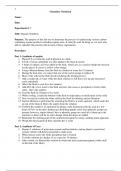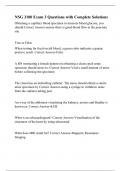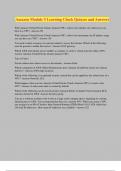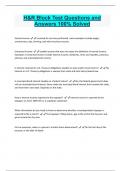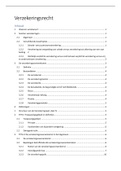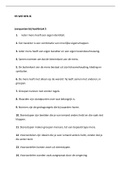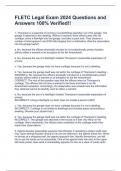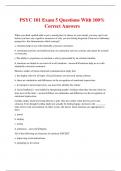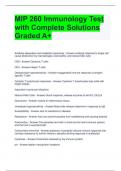Exam (elaborations)
CHEM 104 Experiment 7 Organic Synthesis - Portage Learning
- Course
- CHEM 104
- Institution
- Portage Learning
CHEM 104 Experiment 7 Organic Synthesis - Portage Learning Purpose: The purpose of this lab was to determine the process of synthesizing various carboncontaining organic products including aspirin, urea, & salicylic acid. In doing so, we were also able to calculate the percent yield in each of the...
[Show more]
